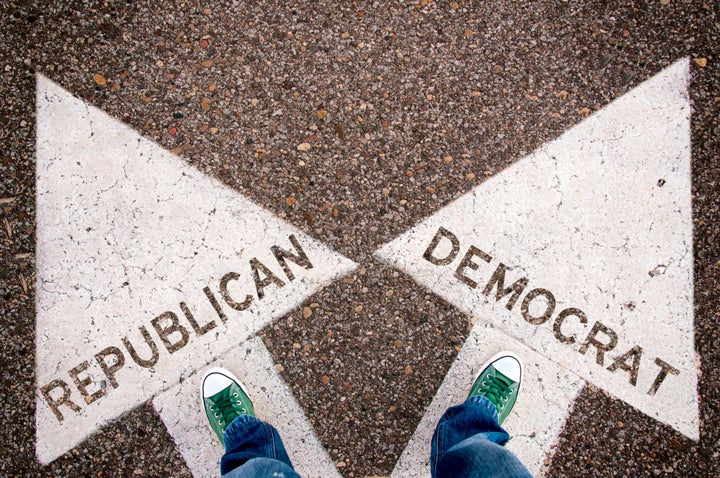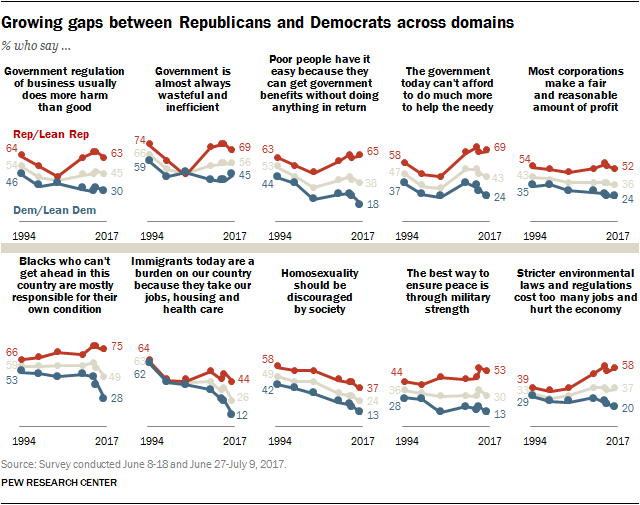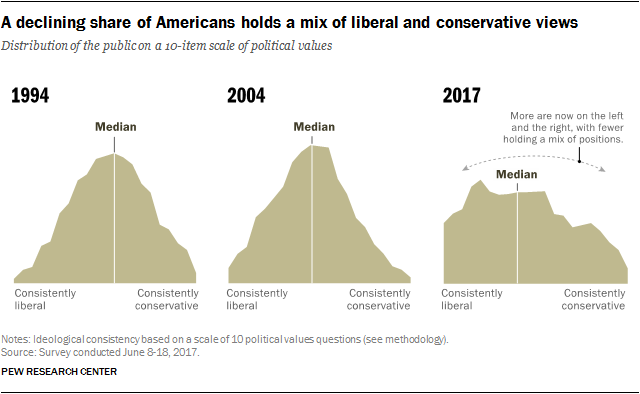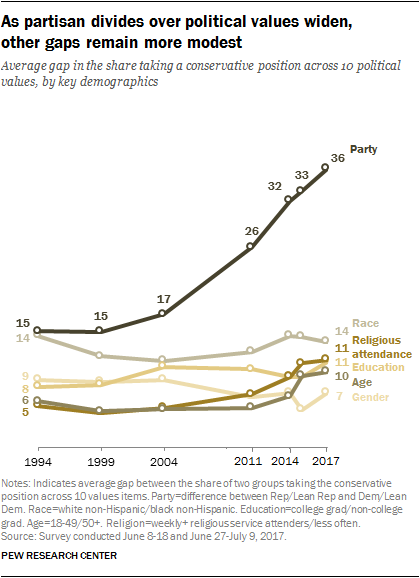
The political divides between Republicans and Democrats are wider than they’ve been at any point in at least 23 years, according to a new report released this week.
“The divisions between Republicans and Democrats on fundamental political values – on government, race, immigration, national security, environmental protection and other areas – reached record levels during Barack Obama’s presidency,” the authors of the report, published Monday by Pew Research, wrote. “In Donald Trump’s first year as president, these gaps have grown even larger.”
The parties are now further apart than they’ve ever been in Pew’s history on the majority of 10 key issues. In some cases, that’s because both parties have moved in different directions: Republicans are now likelier than ever to say that the government “can’t afford to do much more to help the needy,” while Democrats’ agreement with that statement has hit a new low.
The parties have also diverged on race. In 1994, 66 percent of Republicans and 53 percent of Democrats said that “blacks who can’t get ahead in this country are mostly responsible for their own condition,” rather than the victims of racial discrimination. In the most recent survey, Republican agreement with that statement has risen to 75 percent, while Democratic agreement has plunged to 28 percent.
In other cases, one party has simply moved faster than the other in the same direction. In 1994, for instance, a nearly equal share of Republicans and Democrats, 64 percent and 62 percent respectively, described immigrants as “a burden on our country.” Both parties are less likely today to believe that. But the share of Democrats who agree with that statements has plummeted by 50 points, while the shift among Republicans has been a more modest 20-point drop.
Similarly, both parties have grown progressively less likely throughout the past two decades to believe that “homosexuality should be discouraged by society,” although Democrats’ minds have changed more quickly on the issue.

Perhaps the biggest change, however, is that each party has become increasingly homogenous in its views.
Throughout the past few decades, Americans have become progressively less likely to hold a mix of liberal and conservative views on the issues studied by Pew. In 1994, 23 percent of Republicans were more liberal than the median Democrat, and 17 percent of Democrats were more conservative than the median Republican ― percentages that have since dropped to 1 percent and 3 percent, respectively.

As a result, partisanship is now one of the brightest lines dividing the nation, far outshining the splits along demographics like race, religion or educational achievement ― which wasn’t the case as recently as the 1990s.

Pew’s report is based on two surveys conducted June 8-18 and June 27-July 9, which surveyed 2,504 adults and 2,505 adults respectively. Both used live interviewers to reach both landlines and cell phones.
